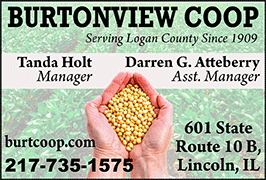|
We have hit the other side of the precipitation
pendulum. In 2023 and 2024, we experienced drought conditions.
Now in 2025, the sump pump sales have surely hit a high note.
For instance, Macomb's total July 2024 rainfall averaged around
two inches. In 2025, many Macomb rain gauges recorded over ten
inches during July.
Outside our waterlogged basements, most of our
landscapes have been enjoying the abundant rain. However, with
more moisture comes increased pressure from plant disease. In
the last month, there has been an increase in plant questions
stemming from fungal infections.
Identify the Pathogen
Disease management in the home landscape can seem daunting.
According to Michigan State University Extension, around 85
percent of plant diseases are caused by fungi or fungus-like
organisms, which often leads to the use of fungicides. Yet at
your local garden center, there may be over a dozen fungicide
products to choose from to help control plant disease. How do
you know which fungicide is right for your situation?
Plant diseases encountered in your backyard must be treated on a
case-by-case basis. First, you must identify the disease.
Through proper identification, you will gain knowledge of the
disease’s lifecycle and when it can be treated. Knowing the
plant species will inform what cultural practices can be done to
minimize the use of chemical application, and what should be
used if it comes to a fungicide.
For fungal infections, several cultural practices should be done
first to help prevent the disease from overwhelming landscape
plantings. Improve air and light within plants through proper
pruning, make sure areas drain properly, and correctly space
plants so they are not overcrowded.

When cultural practices fail, sometimes a
fungicide application for fungal diseases is warranted. Avoid
using the same chemical repeatedly to treat plant disease. Like
all pesticides, fungicides should be rotated to keep the disease
organism from building up resistance to the product. And verify
that you are dealing with a treatable plant disease. Your
local Illinois Extension office can help with diagnosis.
Because field diagnosis can be tricky, with many plant diseases
resembling other issues, we often recommend submitting samples
to the
University of Illinois Plant Clinic.
Selecting Fungicides
Following a disease diagnosis, it is time to determine
treatment. When selecting what fungicides to rotate, first check
to see what active ingredient(s) will successfully treat the
fungal pathogen. The active ingredient should be listed on the
front of each product, and the product label will specify what
pests can be controlled with the active ingredient.
Contact and systemic fungicides
There are two types of fungicides: contact fungicides and
systemic fungicides. Contact fungicides are sprayed on plant
surfaces and are not absorbed. They act as a protectant against
infection. Systemic fungicides are absorbed by the plant tissue
and may move very little within the plant or spread throughout
the plant. Systemic fungicides can suppress disease after it has
infected the plant.
Prevent disease resistance by rotating active ingredients
Once you have identified a list of products whose active
ingredient will treat the diagnosed fungal disease, check the
active ingredients' FRAC code. FRAC stands for Fungicide
Resistance Action Committee, a worldwide consortium of
scientists representing fungicide manufacturers. Their goal is
to prevent plant disease from building up resistance to chemical
treatments. To rotate fungicides, select products from your list
that have different FRAC codes.
[to top of second column] |

FRAC codes can help in rotating active
ingredients
The FRAC code distinguishes the mode of action of different
active ingredients. The mode of action is how the active
ingredient controls the other living organism, in this case,
fungal organisms. Different chemicals may share the same mode of
action against the target organism. FRAC codes help to separate
active ingredients in how they work on the target pest. The more
FRAC codes you can alternate, the less likely resistance will
develop.
Some products, such as chlorothalonil, copper, or
sulfur, are listed under the FRAC code ‘M’. This means these
active ingredients target multiple biochemical sites and are
low-risk for resistance development. Nevertheless, it is always
advisable to incorporate a rotation of any pesticide you use in
the home landscape.
Preventative versus curative treatments
These two types of treatment can be a bit misleading. When it
comes to infected plant tissue, there is often no cure to make
it healthy again. To make a comparison, fungicides act like
sunscreen for humans. Sunscreen will help prevent a sunburn, but
it cannot cure a sunburn once it has occurred. Fungicides
operate in a similar way on plants. Most fungicide treatment is
to prevent infection from occurring. The spraying of fungicides
often coincides with recurring disease in a particular location.
If a portion of the lawn or landscape plants has routinely been
getting infected, we know a fungicide may help prevent that from
occurring next year. But the chemical needs to be applied before
infection occurs. Documenting to record the timing of disease
appearance, plant species identification, and proper disease
diagnosis all play a role in knowing when to apply a
preventative fungicide treatment.
Even products labeled as curative fungicide treatments will not
turn sick plant tissue into healthy tissue, but they can prevent
the further spread of disease. In my mind, fungicide treatments,
either preventative or curative, both still operate as a
preventative; it's just some can be applied after infection to
slow or prevent the spread of a disease to other plants or plant
parts.
Rotate, rotate, rotate
The main point of using any pesticide is to rotate the types you
are using. It is not uncommon for me to have a conversation with
a client who states they have been treating their lawn for years
to prevent a particular disease, and now, for some reason, their
treatment is not working. It can be easy once we find something
that works to stick with it and use it over and over again;
however, this sets up a perfect opportunity for a disease to
adapt to that one treatment, which means it will never work
again once resistance occurs.
Good Growing Tip of the Week: Systemic fungicides are absorbed
by the plant tissue to protect from infection. While this may
sound advantageous, systemic fungicides have the highest risk of
developing resistance.
[Christopher Enroth,
Extension Horticulture Educator, University of Illinois]
 |